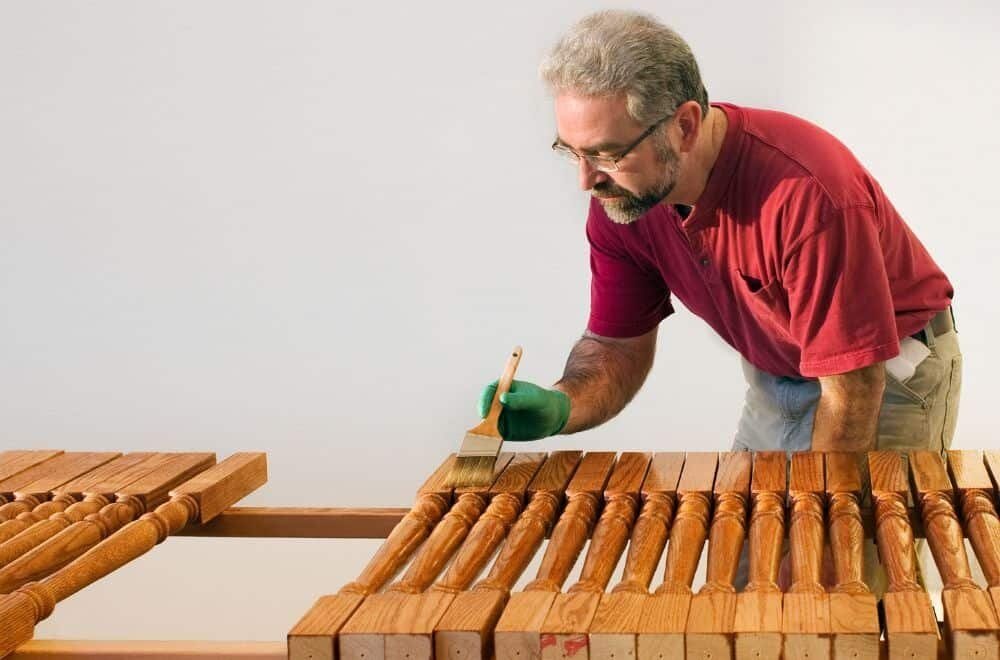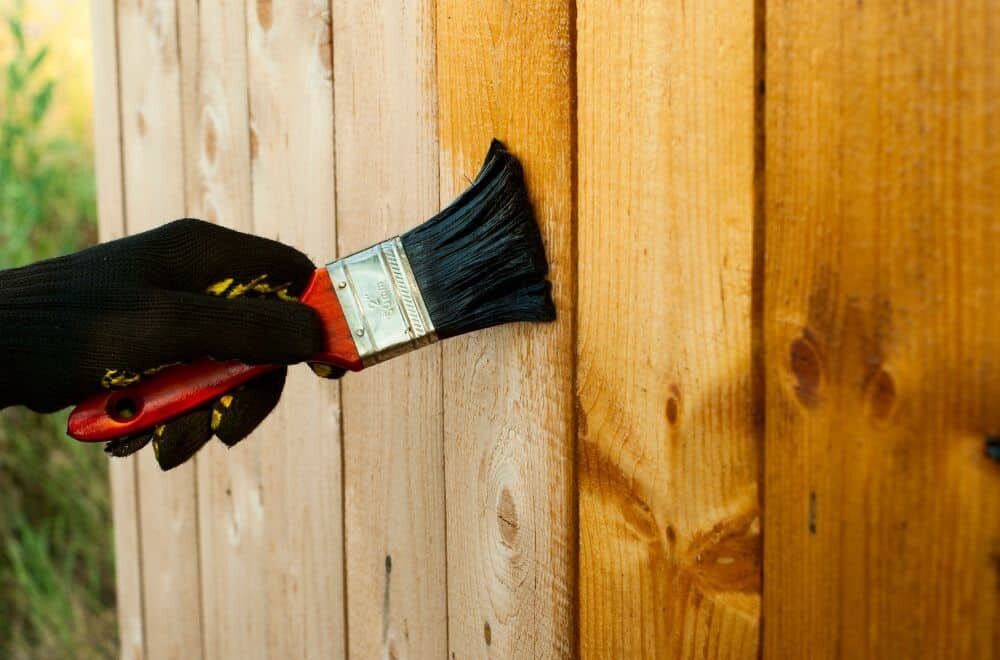Are you tired of the traditional glossy finish on your woodwork? Do you wish to have a more subtle, matte look? Fortunately, there are options available for producing a matte polyurethane finish on your woodwork.
Matte polyurethane is a type of finish that does not reflect light, giving it a dull, low-sheen appearance. It is a popular choice for those who want to achieve a more natural, rustic or vintage look on their woodwork. While traditional polyurethane finishes can leave a shiny, plastic-like appearance, matte polyurethane can provide a more subtle, understated look.
If you’re wondering whether matte polyurethane is available, the answer is yes. There are several brands that produce matte polyurethane finishes, such as Rust-Oleum and Minwax. However, it’s important to note that applying a matte polyurethane finish requires a different technique than traditional finishes.
Understanding Polyurethane Finishes

What is Polyurethane?
Polyurethane is a type of coating that is commonly used to protect wood surfaces. It is a synthetic material that is created by combining a polyol and a diisocyanate. Once applied to a surface, it forms a hard, durable layer that helps to protect the wood from scratches, dents, and other types of damage.
Polyurethane is available in different types of finishes, including matte, glossy, and semi-glossy. The finish that you choose will depend on your personal preference and the type of look that you are trying to achieve.
Matte vs Glossy Finish
When it comes to polyurethane finishes, there are two main types: matte and glossy. Matte finishes are less reflective and have a dull, low-sheen appearance. Glossy finishes, on the other hand, are highly reflective and have a shiny, polished appearance.
The type of finish that you choose will depend on the look that you are trying to achieve. If you want a more natural look for your wood surface, then a matte finish may be the best option. Matte finishes are also a good choice if you want to minimize the appearance of scratches and other types of damage.
If you want a more polished look for your wood surface, then a glossy finish may be the best option. Glossy finishes are highly reflective and can help to make your wood surface look more vibrant and eye-catching.
Overall, the choice between a matte or glossy finish will depend on your personal preference and the type of look that you are trying to achieve. Both types of finishes offer their own unique benefits, and it is up to you to decide which one is right for your project.
Production of Matte Polyurethane
If you’re looking to achieve a more subtle, less glossy finish on your woodwork, matte polyurethane might be the solution for you. Here’s what you need to know about its production.
Manufacturing Process
Matte polyurethane is produced through a similar process to regular polyurethane. The main difference is the addition of flatting agents, which are clear powders that reduce the glossiness of the finish.
The manufacturing process typically involves the following steps:
- Mixing the key ingredients (discussed in the next section) together in a reactor vessel.
- Adding flatting agents to the mixture.
- Heating the mixture to initiate the reaction that forms the polyurethane.
- Applying the resulting mixture to the wood surface.
The exact process can vary depending on the specific manufacturer and product.
Key Ingredients
The key ingredients in matte polyurethane are polyols and isocyanates. Polyols are typically derived from petroleum, while isocyanates are derived from diisocyanates such as toluene diisocyanate (TDI) or methylene diphenyl diisocyanate (MDI).
Other ingredients may also be added to the mixture, such as catalysts to speed up the reaction, surfactants to improve the mixture’s flow, and UV stabilizers to protect against fading.
Overall, matte polyurethane can be a great option for those looking for a more subdued finish on their woodwork. Just be sure to follow the manufacturer’s instructions carefully to achieve the best results.
Application on Wood

When it comes to applying polyurethane on wood, there are some preparation steps and application techniques that can help you achieve a matte finish. Here are some tips to help you get started:
Preparation Steps
Before you apply polyurethane on wood, you need to prepare the surface properly. Here are some preparation steps to follow:
- Sand the surface: Start by sanding the wood surface with fine-grit sandpaper to remove any rough spots or imperfections. Wipe the surface clean with a tack cloth to remove any dust or debris.
- Apply a wood conditioner: If you’re working with softwood or porous wood, apply a wood conditioner to the surface. This will help the wood absorb the polyurethane evenly and prevent blotching.
- Choose a matte polyurethane: Look for a matte or flat polyurethane finish to achieve a non-shiny look. You can also mix a matte additive with a regular polyurethane to create a custom finish.
Application Techniques
Once you’ve prepared the wood surface, it’s time to apply the polyurethane. Here are some application techniques to follow:
- Apply the polyurethane in thin coats: Use a high-quality brush or a foam applicator to apply the polyurethane in thin, even coats. Avoid applying too much polyurethane at once, as this can lead to drips and bubbles.
- Sand between coats: Allow each coat to dry completely before sanding the surface lightly with fine-grit sandpaper. This will help the next coat adhere better and make the surface smoother.
- Apply multiple coats: Apply at least two or three coats of polyurethane to achieve a durable and long-lasting finish. Allow each coat to dry completely before applying the next one.
By following these preparation steps and application techniques, you can achieve a matte polyurethane finish on your wood surface. Remember to work in a well-ventilated area and wear protective gear, such as gloves and a mask, when working with polyurethane.
Benefits of Matte Finish
When it comes to finishing wood, there are a variety of options available. One of the most popular options is matte finish. Matte finish has a number of benefits that make it a great choice for many projects. In this section, we’ll discuss the aesthetic appeal of matte finish, as well as its durability and maintenance.
Aesthetic Appeal
One of the main benefits of matte finish is its aesthetic appeal. Unlike glossy finishes, matte finishes do not reflect light, which gives them a more subdued and natural look. This can be particularly appealing for certain types of wood, such as rustic or reclaimed wood, which may not look as good with a shiny finish.
Matte finishes can also be a good choice if you want to create a more relaxed or casual atmosphere in a room. For example, if you’re finishing a dining room table, you may want to choose a matte finish to create a more intimate and cozy atmosphere.
Durability and Maintenance
Another benefit of matte finish is its durability. Matte finishes are often made with polyurethane, which is a very strong and durable material. This means that matte finishes can provide excellent protection for your wood, and can help prevent scratches, dings, and other types of damage.
Additionally, matte finishes are often easier to maintain than glossy finishes. Because they do not reflect light, they are less likely to show smudges, fingerprints, and other types of marks. This means that you can often get away with cleaning your matte-finished wood less frequently than you would with a glossy finish.
Overall, if you’re looking for a finish that is both aesthetically pleasing and durable, matte finish is a great choice. With its natural look and strong protective properties, it’s no wonder that so many people choose matte finish for their wood projects.
Choosing the Right Finish

When it comes to choosing the right finish for your wood project, there are a few things to consider. A matte finish can be a great option if you want to reduce the shine and glare of your wood finish. In this section, we will discuss some of the considerations and popular brands of matte polyurethane finishes.
Considerations
Before choosing a matte polyurethane finish, you should consider the following factors:
- Durability: Will the finish hold up to wear and tear over time?
- Application: Is the finish easy to apply? Does it require special tools or equipment?
- Appearance: Does the finish provide the desired level of shine or matte finish?
- Cost: How much does the finish cost? Is it worth the investment?
Popular Brands
There are several popular brands of matte polyurethane finishes that you can choose from. Here are a few options to consider:
- Varathane: Varathane offers a matte finish in both water-borne and standard oil-based formulas. Their finishes are known for their durability and ease of application.
- Zar: Zar also offers a matte urethane finish that is easy to apply and provides a durable, long-lasting finish.
- Minwax: Minwax offers a matte finish in their Fast-Drying Polyurethane line. Their finish is known for its fast drying time and durability.
- General Finishes: General Finishes offers a matte finish in their High-Performance Water-Based Topcoat line. Their finish is water-resistant and provides a durable, long-lasting finish.
When choosing a matte polyurethane finish, it’s important to find a brand that meets your specific needs and preferences. Consider the factors listed above and do your research to find the best option for your project.
Frequently Asked Questions
How can I dull a glossy wood finish without sanding?
If you want to dull a glossy wood finish without sanding, you can use a deglosser or a liquid sander. These products are designed to remove the glossy surface of the finish, allowing you to apply a new coat of polyurethane with a matte finish.
What are some ways to make a shiny wood finish look matte?
There are several ways to make a shiny wood finish look matte. One option is to use a rubbing compound to dull the finish. Another option is to apply a coat of wax or oil to the surface of the finish. You can also use a matte topcoat to cover the shiny finish.
Why does my polyurethane finish look shiny instead of matte?
If your polyurethane finish looks shiny instead of matte, it may be because you used a glossy or semi-glossy polyurethane. To achieve a matte finish, you need to use a polyurethane with a matte sheen.
Is there a type of polyurethane that has a matte finish?
Yes, there are types of polyurethane that have a matte finish. Matte polyurethane leaves the least shiny coating and conveys the look of natural, unfinished wood. It is a good option if you want to achieve a matte finish on your wood surface.
What are some techniques to make a polyurethane finish less shiny?
To make a polyurethane finish less shiny, you can use a rubbing compound or apply a coat of wax or oil to the surface of the finish. You can also use a matte topcoat to cover the shiny finish.
Are there any polyurethane finishes that do not have a shiny appearance?
Yes, there are several types of polyurethane finishes that do not have a shiny appearance. Matte, satin, and semi-gloss polyurethane finishes all have a lower level of sheen and reflectivity than high-gloss polyurethane finishes.